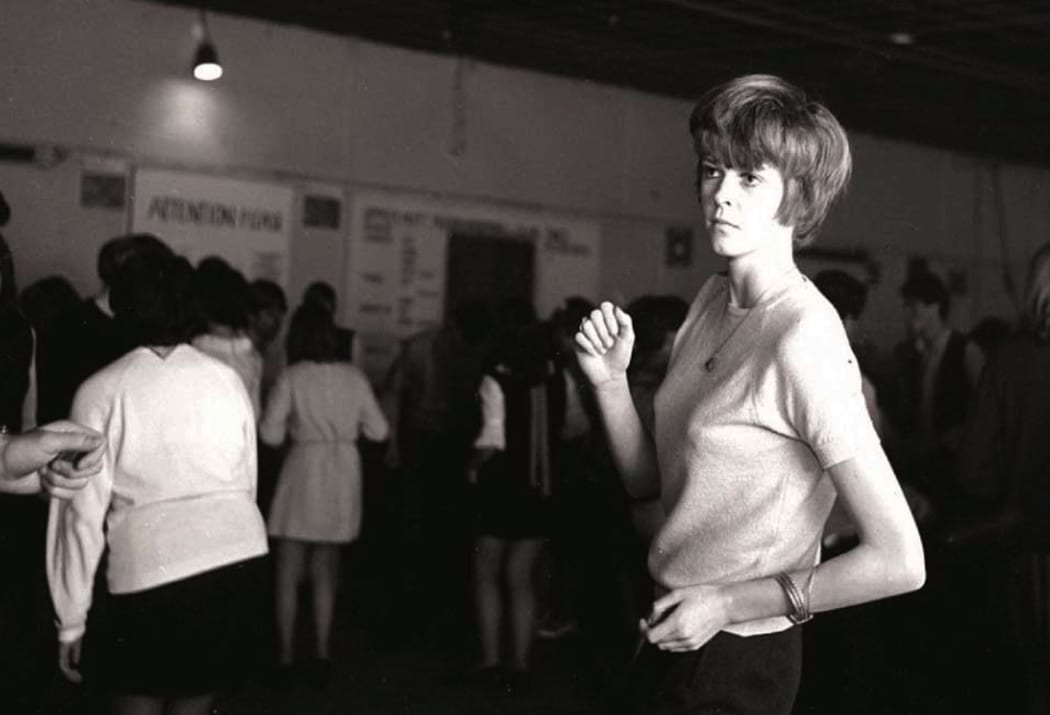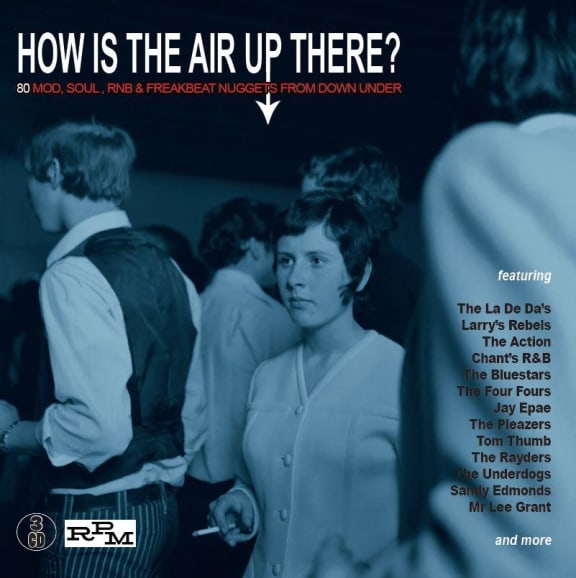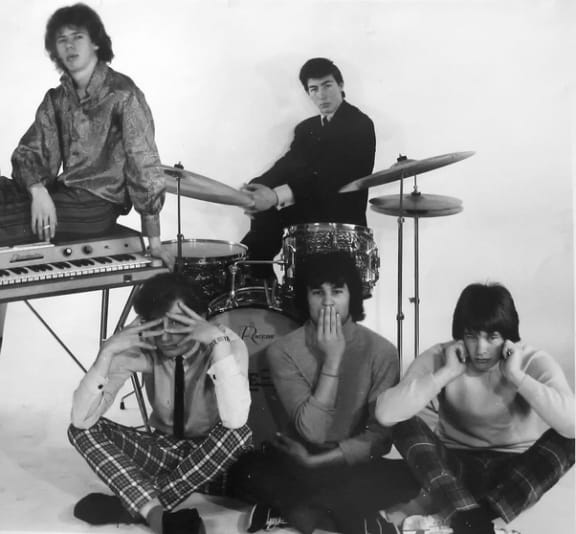Nick Bollinger reviews an exhaustive collection of 60s Kiwi garage rock.

How Is The Air Up There? Photo: supplied
People have been fetishising the garage rock scene of the 60s now for almost half a century. The decade was barely over when the Nuggets album was first released: a 1972 compilation of American garage rock that would define the genre and influence the punk movement that followed. And it opened the door to a stream of reissues and retrospectives, which have kept coming to this day, with increasing specialisation. There are collections now of Japanese and Brazilian garage bands, Australian and, of course, New Zealand ones.
The La De Da’s ‘How Is The Air Up There?’ is a homegrown garage rock classic from early 1966, as raw and exciting as anything anywhere in the world at the time, and a far more dynamic version than the one released by its actual authors, American duo The Changin’ Times.

How Is The Air Up There? Photo: supplied
It inspired the title of the first such collection of local 60s rock: How Was The Air Up There? – a single LP released by K-Tel in 1981. And it lends its title again to a new – and this time definitive – collection, put together by local archivist Grand Gillanders and released by the London-based reissue label RPM. A number of the 22 tracks from How Was The Air Up There? appear on How Is The Air Up There?, but those are just the more familiar ones and they are absorbed into a 3-CD set - 80 tracks in all – that includes a number of things barely ever heard before because, until now, they were never released.
There’s The Roadrunners, a legendary if short-lived combo from the Hutt Valley, featuring Chaz Burke Kennedy, who has to be one of the most ferocious local guitarists ever to plug into a Jansen. Their recording of ‘Get Out Of My Life Woman’ comes from a 1967 audition tape made for HMV records. Yet as smoking as it is, the label turned the group down and they broke up soon after. Still it fits right into this snapshot of 60s Kiwi rock and is an example of the kind of deep digging Gillanders has done in putting the set together.
Also unreleased at the time was ‘Anything You Like’ by The Spectres, an Auckland band who recorded their mixture of The Troggs, The Who and something of their own in the Stebbings studios in mid-67. And there are other previously unissued obscurities from The Deep Set, Grim Ltd., The Cossacks and The Identity – a band about which, paradoxically, nothing at all seems to be known.
Then there are relatively well-aired tracks like The Bluestars’ ‘Social End Product’. Though it had minimal impact at the time, this 1966 single by Auckland band The Bluestars has latterly been recognised as an exemplar of its kind, and original copies have been known to change hands for a mind-boggling $2000.
The digital version here will suit me fine for now, thanks. But it does sum up much of the appeal of this short-lived but long-lasting genre. It’s fast and distorted, raw, exuberant, and a little pissed off – without the self-conscious posturing of the punks that would come a decade later. The song is an original too – by the group’s guitarist John Harris – at a time when most local groups were still relying heavily on covers, even if they were delivering them with more gusto the originals, as the La De Da’s did.

The La De Da's circa '66 Photo: supplied
So what could the 21st century anthropologist tell by listening to this time capsule from mid-to-late 60s New Zealand? The place was full of bands, that’s for sure, many of them gravitating to the gritty sound of the Stones, Pretty Things, Animals or Who rather than the more refined harmony-based music of The Beatles. There’s the occasional bit of chorus shouting for sure, but most of the bands are led by a solitary singer. Fuzz boxes were plentiful, as were electric organs. Keith Moon might have been the most imitated drummer. And the bands were almost entirely comprised of boys. Virtually the lone female voice is here is that of Liverpool-born Sandy Edmonds – whose ‘Come and See Me’ has the requisite distortion and sounds like it was the template for the later ‘Counting The Beat’.
Edmonds was just one of a number of young English immigrants who turned up in the New Zealand music scene around this time. As compiler Grant Gillanders notes, it was a peak period for immigration from the UK, which might account in part for the huge explosion of British-style bands here – though he also concedes that our isolation meant that the style of these recordings was already a little dated at the time they were made.
On the third disc Gillanders has grouped horn-led tracks by the likes of Quincy Conserve, Peter Nelson and the Castaways and even an oddity from Johnny Devlin, all with a pronounced soul flavour. But there’s little that doesn’t earn its place. New Zealand may have produced music of greater originality in the decades that followed, but I’m not sure this country ever produced such viscerally exciting records – or as many of them in such a short burst - as the ones gathered together on How Is The Air Up There?
How Is The Air Up There? is available on RPM

